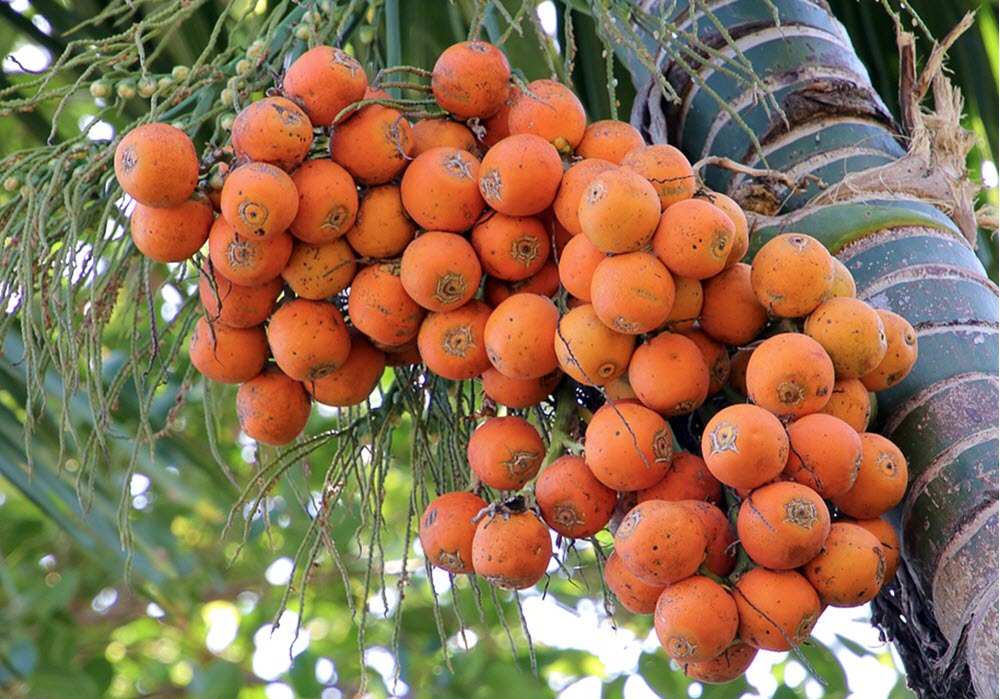Content:
The betel nut, scientifically known as Areca catechu, is the seed of the areca palm, a species native to the tropical Pacific, Southeast and South Asia, and parts of East Africa. This nut, often wrapped in the leaves of the Piper betle vine with added lime (calcium hydroxide), is chewed for its stimulant effects and has deep cultural and historic significance in many societies.

The Cultural Significance of Betel Nuts
Chewing betel nut is an integral aspect of many regions’ social and cultural fabric. Its use is steeped in tradition, symbolizing hospitality and respect. In India, betel nut wrapped in betel leaf is often offered to guests and at religious ceremonies. In Papua New Guinea, it’s an important element in tribal rituals and ceremonies.
The betel nut is also used in Traditional Chinese Medicine, where it is believed to purify the body, destroy intestinal parasites, and promote salivation and thirst.
The Psychoactive Effects of Betel Nuts
The primary psychoactive ingredient in the betel nut is arecoline, a muscarinic receptor agonist, which gives the nut its stimulating properties. Chewing betel nut can induce feelings of euphoria and well-being, heightened alertness, sweating, salivation, a warm sensation in the body, and increased capacity for intense concentration and work.
The Prevalence of Betel Nut Use
Betel nut is the fourth most commonly used psychoactive substance in the world, following only caffeine, alcohol, and tobacco in prevalence. Approximately 600 million people worldwide use it, with usage widespread in Asia and migrant communities worldwide.
The Health Implications of Betel Nut Consumption
While betel nut chewing is deeply embedded in many cultures, it poses significant health risks. Regular consumption is linked to a range of serious health conditions.
- Oral Health Issues: Betel nut chewers often suffer from oral submucous fibrosis, a precancerous condition characterized by stiff and hard oral mucosa. The condition can limit mouth opening and cause discomfort.
- Oral and Esophageal Cancer: The International Agency for Research on Cancer (IARC) has classified the betel nut as a Group 1 carcinogen. Prolonged use has been associated with an increased risk of oral and oesophagal cancer.
- Other Health Concerns: Studies suggest a link between betel nut use and conditions like type 2 diabetes, cardiovascular diseases, and adverse effects on pregnancy.
Global Health Response and Regulation
Recognizing the significant health risks posed by betel nut use, global health bodies and governments have taken measures to reduce its consumption.
The World Health Organization (WHO) has outlined strategies to decrease its usage, including public education about its risks, prohibition of its advertisement, and increased taxation. In many regions, selling betel nuts is now regulated. For instance, in 2014, Taiwan launched a campaign to reduce betel nut cultivation and consumption.
The intricate blend of cultural, historical, and social practices surrounding betel nut use makes it a fascinating subject. However, the health implications associated with its consumption underline the importance of public health interventions. Comprehensive awareness campaigns and regulatory policies are needed to tackle the challenge posed by this deeply ingrained habit. Meanwhile, additional research into betel nut’s impact on human health can further inform and refine these public health strategies.